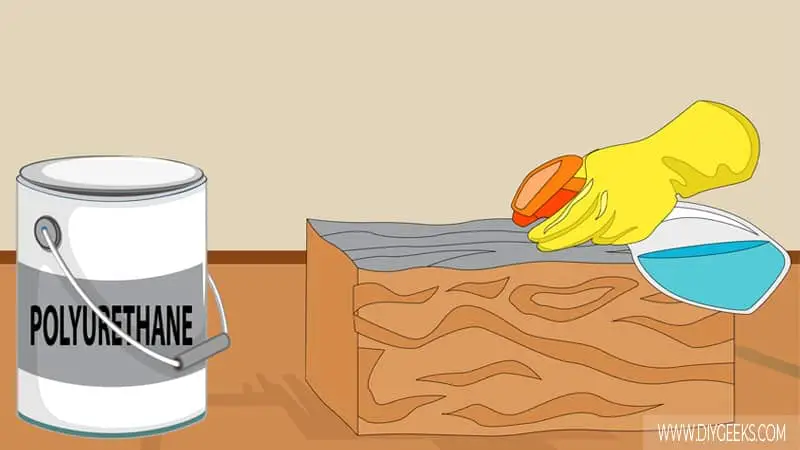Polyurethane forms a glossy moisture-resistant layer over a wooden surface, so removing it is hard. To remove polyurethane from wood, sand it off, use paint strippers, baking soda and vinegar, or acetone.
To sand it off, use coarse-grit sandpaper (150-grit). The sandpaper will remove the polyurethane and smooth the wooden surface and make it ready for the next coating.
Can You Remove Polyurethane From Wood Without Sanding?
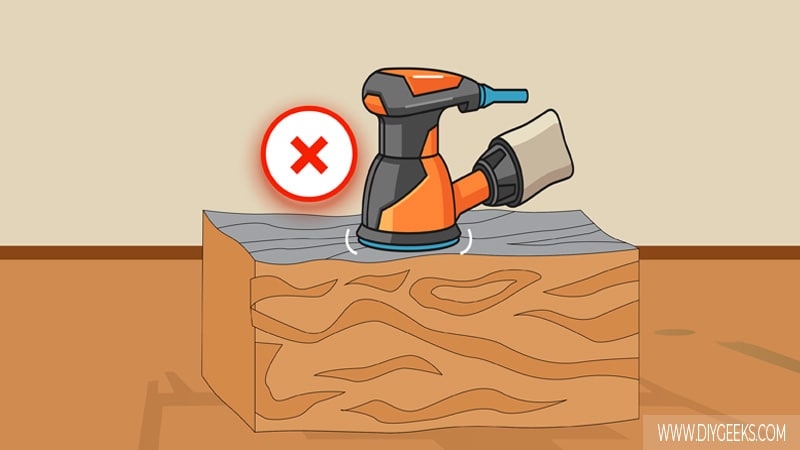
You can remove polyurethane without sanding by using a paint stripper, baking soda, or vinegar.
The paint stripper will dissolve the particles and liquefy the coating, making it easier to wipe it off. You can also use a paint thinner instead of a paint stripper.
However, sanding the polyurethane is the best way to remove it as it doesn’t damage the wood and leaves behind a smooth surface for the next paint (or sealer) to stick to.
Sanding will also remove the imperfections, and bumps, and smooth out the surface, while paint stripper won’t.
A paint stripper can damage wood if you leave it for too long. You also must clean (remove) the paint-stripper residue or the next coating won’t stick.
Can You Remove Polyurethane Without Stripping Stain?
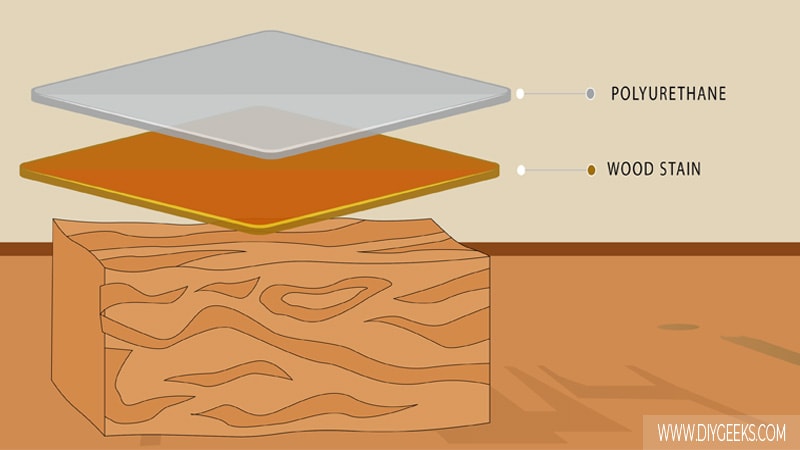
You can remove polyurethane without stripping the wood stain underneath by using a mild paint remover.
A water-based mild paint remover is not strong enough to remove two coats, but it will remove the polyurethane (as it’s the final coat). But, you must remove the mild paint remover after 15-20 seconds or it will remove the wood stain, too.
You can use a mixture of denatured alcohol and lacquer thinner as an alternative to mild paint remover. However, you must wipe off the mixture within 15 seconds to prevent it from removing all the coatings.
Removing polyurethane without removing the wood stain underneath doesn’t always work. You will often notice etched spots on the stain, especially if you leave the paint remover for too long. You must apply a fresh coat of wood stain to hide (cover) these etched spots.
How To Remove Polyurethane From Wood?
To remove polyurethane from wood, do the following things.
- Sand it Off.
- Use Paint Strippers.
- Use Baking Soda and Vinegar.
- Use Acetone.
- Use Lacquer Thinner.
- Use Rubbing Alcohol.
- Use Citristrip.
1. Sand it Off
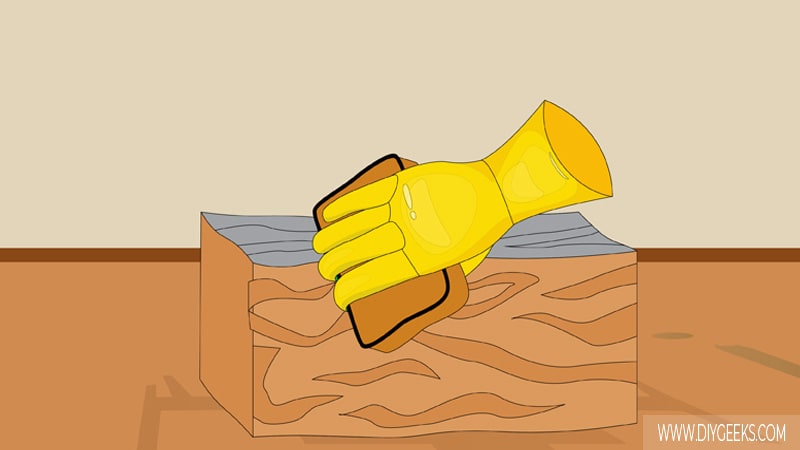
The best way to remove polyurethane is by sanding it off. The abrasive side of the sandpaper will remove the glossy layer of the sealer and smooth out the wooden surface.
The tools you need for this project are listed below.
- Sandpaper
- A pair of gloves
- A sander
Here is a guide for this method:
- Clean the surface to remove debris that can damage the sandpaper.
- Attach the sandpaper to the bottom of the sander.
- Sand it off.
- Remove the sanded dust.
- Clean the wood.
Frequently check the surface while sanding to know if the sealer has been removed. If you continue sanding after the polyurethane has been removed, you’ll gouge the wood.
Note: To remove polyurethane from a wood floor, use a floor or orbital sander.
2. Use Paint Strippers
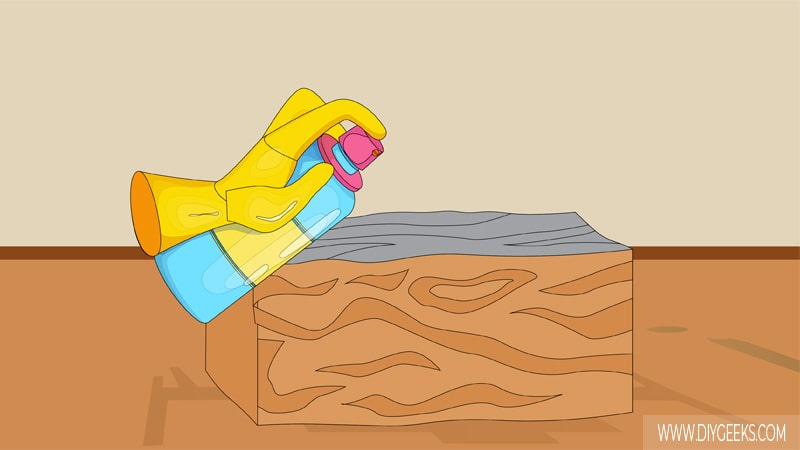
You can use a paint stripper to remove polyurethane. The paint stripper will soak into the sealer and dissolve its particles, making it lose its bond to the wood. This will cause the finish to bubble up and peel off.
The tools you need for this project are listed below.
- A paint stripper
- Paint scraper
- A pair of gloves
- Plastic putty knife
- Clean rags
- Wire sponge
Here is a guide for this method:
- Clean the surface using clean rags.
- Apply a layer of paint stripper.
- Wait for 20 minutes.
- Inspect the coating; if the polyurethane has developed bubbles, remove it.
- Remove it by scraping and wiping it and the paint stripper off the wood.
- Re-apply the paint stripper over the leftover.
- Clean the wood with warm water to remove paint stripper residue.
Tip: You must always follow the manufacturer’s instructions when using a paint stripper.
3. Use Baking Soda and Vinegar
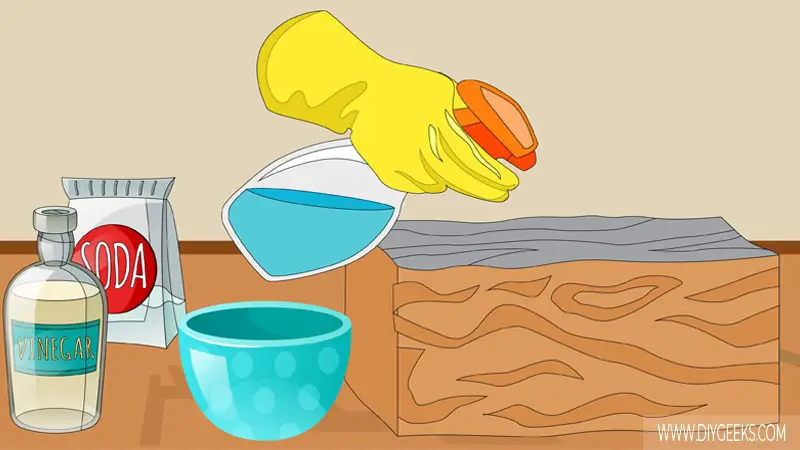
You can also remove polyurethane by using a mixture of baking soda and vinegar. Baking soda is an alkaline substance, and vinegar is considered to be acidic. Mixing both will create a good polyurethane stripper.
The tools you need for this project are listed below.
- Baking soda
- Vinegar
- A clean bowl
- Turning stick
Here is a step-by-step guide:
- Mix equal parts of baking soda and vinegar in a clean bowl.
- Add a cup of warm water.
- Stir the mixture using a turning stick.
- Apply the mixture to the finish.
- Wait until the finish starts to bubble.
- Use a scraper to remove it.
- Wipe off excess baking soda or polyurethane.
Tip: While scraping, ensure to do so along the wood grain.
4. Use Acetone
You can use acetone to remove wet polyurethane coatings. But, acetone can’t remove the sealer if it has already cured (fully dried).
5. Use Lacquer Thinner
You can use lacquer thinner to dissolve and remove polyurethane. Lacquer thinner can remove topcoats such as polyurethane, varnish, and lacquer.
Don’t let the lacquer stay over the wood for too long as it can discolor it.
Note: You can use lacquer thinner to clean polyurethane brushes too.
6. Use Denatured Alcohol
You can use denatured alcohol to remove wet polyurethane. Denatured alcohol can’t remove the dry (or cured) polyurethane.
If the finish has cured, mix the denatured alcohol with a stronger solvent (such as lacquer thinner) and apply it over the sealer.
7. Use Citristrip
You can use Citristrip to remove polyurethane. Citristrip is an industrial-strength remover that removes multiple layers of paint and sealers. This paint remover will remove fresh and cured finishes within minutes.
What Products You Shouldn’t Use To Remove Polyurethane?
The products you shouldn’t use to remove polyurethane are as follows.
1. TSP (Trisodium Phosphate)
TSP (Trisodium Phosphate) is an alkaline-based cleaning agent that is not strong enough to remove it. This cleaning agent is used to clean, degrease, and remove dirt from different surfaces, but it can’t remove dried sealers.
The best TSP will do is to gunk up the finish or make it sticky.
2. Turpentine
Turpentine can soften polyurethane, but it can’t remove it. So, you can use turpentine to soften it and then use a paint remover to remove it.
3. Mineral Spirit
Mineral spirit isn’t strong enough to dissolve and remove polyurethane. It’s a petroleum-distilled solvent that removes latex and oil-based paints only.
4. Goo Gone
Goo gone can’t remove polyurethane. You can use Goo gone to remove stains and dirt from surfaces. However, goo gone isn’t strong enough to penetrate or dissolve a sealer.
